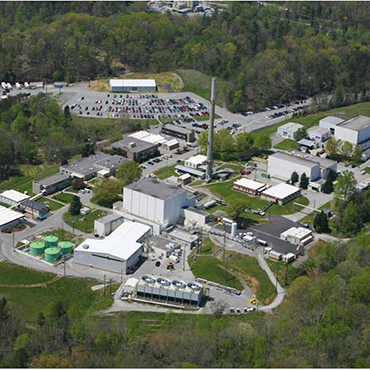Supercomputer centers, drone privacy and intel desktops

News and notes from around the federal IT community.

Oak Ridge National Laboratory is one of two DOE labs that will house supercomputing centers of excellence with IBM's support.
DOE to get supercomputing centers of excellence
Two of the Energy Department's national labs are working with IBM and technology provider Nvidia on a pair of supercomputing centers of excellence.
The centers -- at Lawrence Livermore National Laboratory and Oak Ridge National Laboratory -- are in support of IBM's supercomputing contract with DOE, according to a July 13 announcement IBM made at the International Supercomputing Conference in Frankfurt, Germany.
The centers will enable advanced, large-scale scientific and engineering applications for various DOE missions and will center on the Summit and Sierra supercomputer systems to be delivered to Oak Ridge and Lawrence Livermore, respectively. The systems are expected to be operational in 2018.
As the new supercomputers are being readied for installation, the centers of excellence will prepare the way for their optimum use for scientific research in such critical areas as energy, climate, cosmology, biophysics, astrophysics and medicine, as well as national nuclear security and related interests.
NTIA seeks to generate commercial drone best practices
The National Telecommunications and Information Administration will host a public forum on Aug. 3 to kick off a round of multi-stakeholder policymaking on privacy and the use of commercial drones.
The Obama administration is seeking to develop a policy governing the collection of images and other data via unmanned aircraft. Already, more than 50 companies, civil society groups, trade associations and others have submitted comments to NTIA.
At the meetings, NTIA plans to take the position of a neutral convener to hash out a set of best practices for a future in which drones are used for broad industrial purposes such as package delivery, agriculture and news gathering.
The participatory model has its critics. Recently, a group of nine consumer advocacy and privacy organizations pulled out of an NTIA effort to produce best practices for the commercial use of facial recognition technology. In an open letter, the organizations said that they did not believe "the NTIA process is likely to yield a set of privacy rules that offers adequate protections for the use of facial recognition technology."
BAE Systems nabs second phase of IC common desktop program
Intelligence agencies have awarded BAE Systems a contract for the design and implementation of the next phase of the intelligence community’s common desktop environment. The award, which was made in late April but has not been publicly announced, sets the stage for the crucial second phase of the project.
"The Phase 2 solution will deliver flexible service offerings to support a variety of IC mission needs," an intelligence official said in a statement to FCW. "The primary goal of Phase 2 is to enhance the user experience through a common IC desktop interface, access to common applications and data, and eventual community-wide desktop mobility."
The overarching aim of the IC Desktop Environment program is to move intelligence agencies from from their own "stovepiped" networks to an enterprise model through a common suite of desktop applications. The program has accelerated in the last two years, with common desktop services deployed to several thousand users at the National Geospatial-Intelligence Agency and the Defense Intelligence Agency.
NEXT STORY: How To Break Into the CIA’s Cloud on Amazon


